Complete eCommerce SEO Guide

Getting more traffic is top of mind for any ecommerce business. But how do you attract visitors to your online store without spending big on ads and marketing? The answer: By knowing how to harness ecommerce SEO.
Ecommerce search engine optimization (SEO) is the practice of fine-tuning your website to meet search engine best practices, and updating your content to reflect what your customers are searching for.
Benefits of SEO for store owners include increased visitors, brand awareness, and sales. But with constant search engine algorithm updates, knowing how to approach search optimization can be difficult.
This guide covers the basics of ecommerce SEO, including how to research keywords, structure your site, and create content for product pages. Together with this SEO checklist, you’ll be set up to rank and reap some SEO rewards.
What is ecommerce SEO?
Ecommerce SEO is the process of increasing the visibility of an online store in search engine results pages (often known as SERPs).
The tasks involved in ecommerce SEO marketing are varied. They include creating content that satisfies keyword queries typed into search engines. For example, an ecommerce store like True Classic, which sells t-shirts, can improve its website SEO by creating content on “how to fold t-shirts without wrinkles.”
Ranking for this keyword attracts additional visitors to True Classic’s website, some of whom will become customers.
Other ecommerce SEO activities involve increasing the loading speed of pages, writing detailed product descriptions, and acquiring links from authoritative websites.
Ecommerce websites use SEO as a strategy to generate more traffic, attracting visitors who input queries related to their products and brand.
Why ecommerce websites care about SEO
When you search for something on Google, you’re taken to a search engine results page (SERP). There, you’ll find approximately 10 organic results. These organic results appear below paid ads and Google Shopping ads.
Ecommerce SEO is all about ensuring your product pages appear among the top organic search results on the first page of Google. Websites that don’t rank within the top 10 are rarely visited, and even those in positions three to five receive far less traffic than the top results. Worth noting: SEO company Backlinko found that only 0.63% of searchers click on websites listed on page two of Google search results. It also reported that the first result on a Google SERP gets 27.6% of all the clicks. In other words, SEO matters. The name of the game, then, is to rank as high on the first page of search engines like Google, Bing, and Yahoo as possible—both for search terms related to your products, as well as searches within your ecommerce area of expertise.
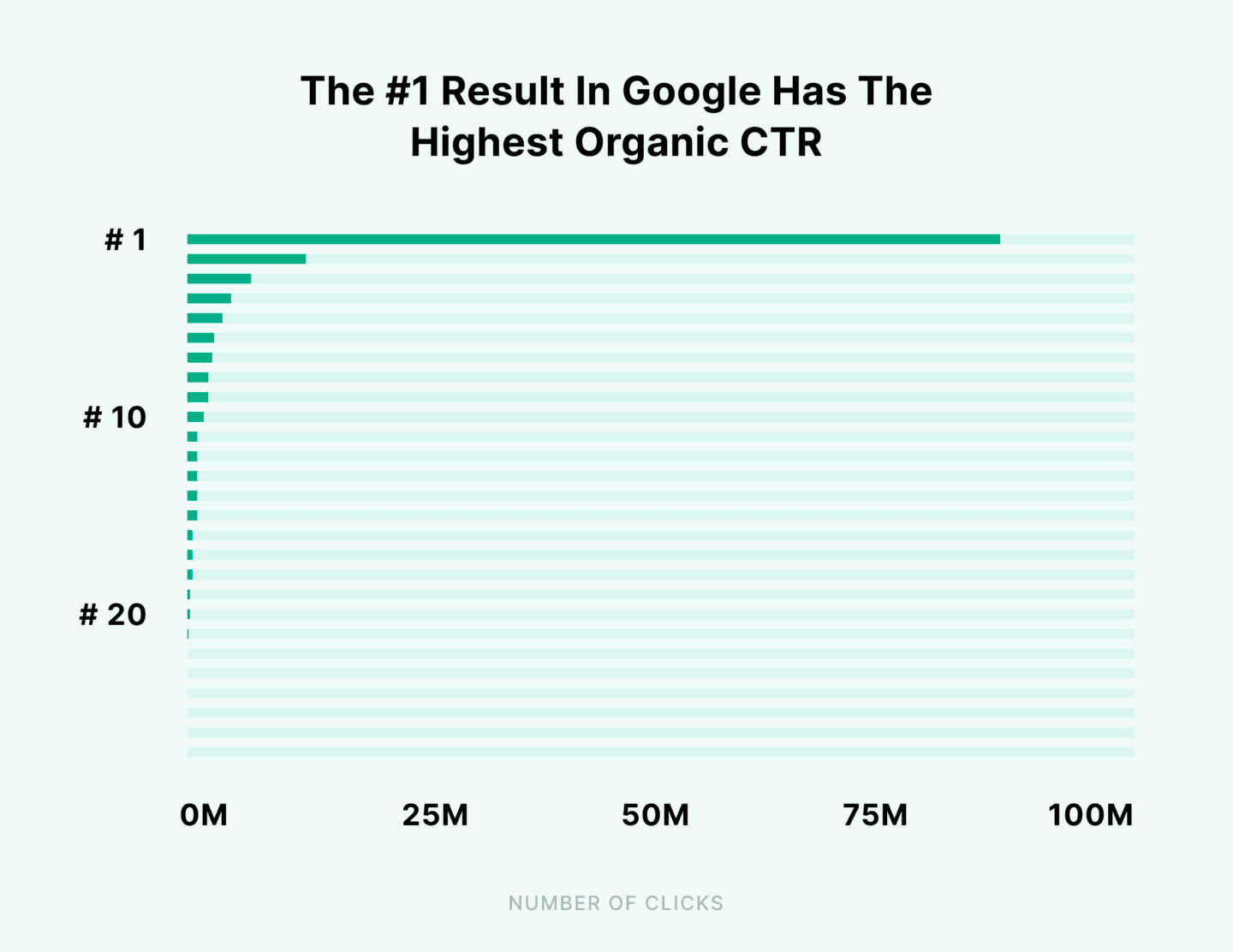
How to create an ecommerce SEO strategy
If you’re new to search engine optimization and want to increase your store’s ranking on Google, take a look at these six steps. They provide actionable tips for setting up good, basic ecommerce SEO on your website.
1. Ecommerce keyword research
The first step in any ecommerce SEO strategy is to identify high-value search terms that your potential customers are using. You can do that through ecommerce keyword research, which can be conducted in a number of ways.
Ecommerce keyword research is slightly different from traditional keyword research. While most sites care only about informational keywords, you’ll want to target a mix of informational and commercial keywords, like this:
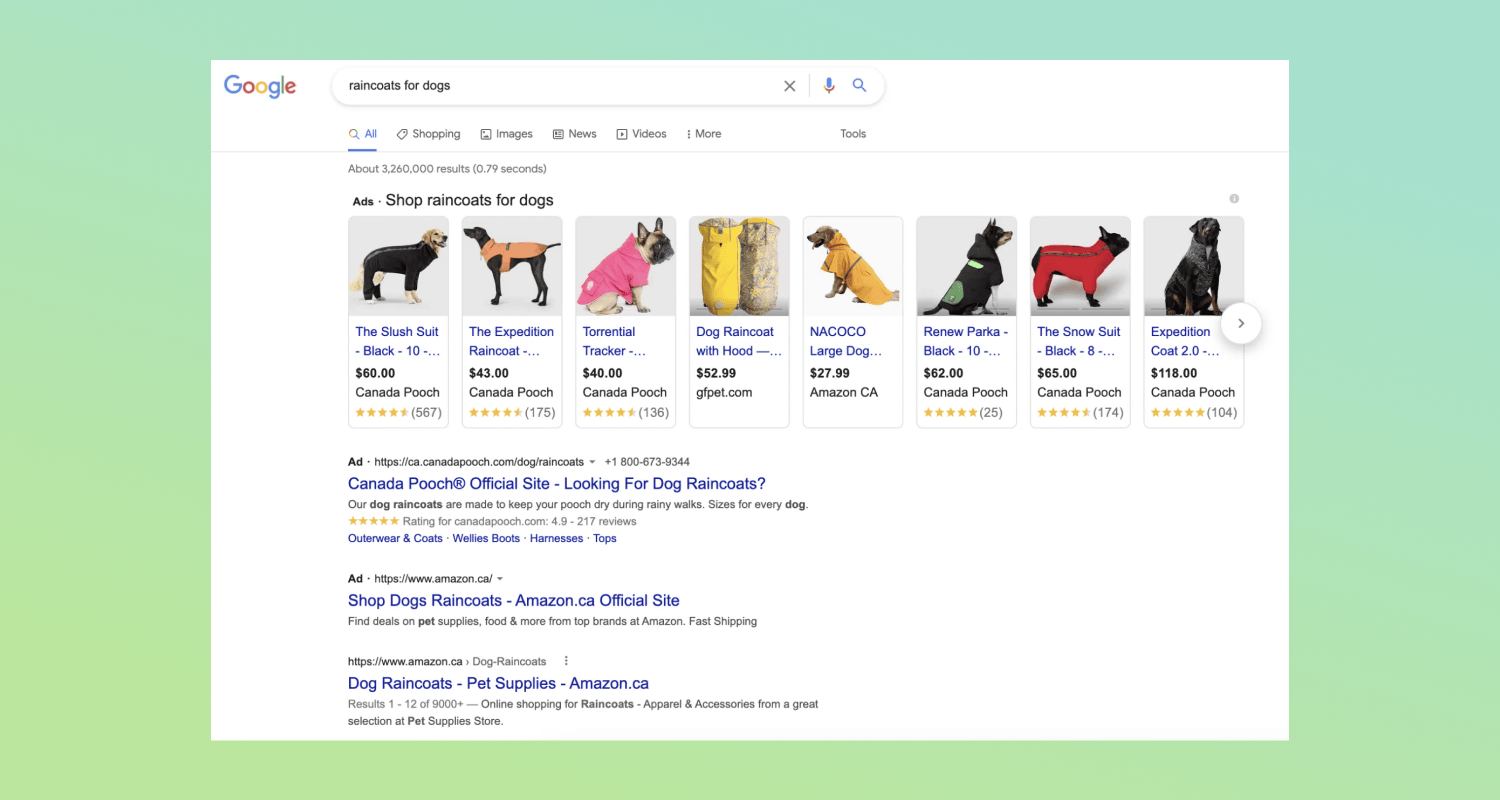
Informational keyword searchers are looking for answers, guides, and explanations. Blogs and content-heavy sites care most about these keywords. Shopify stores and other ecommerce sites have blogs too, but they also target keywords that show buying intent, like “raincoats for dogs.”
Amazon and Google autocomplete predictions
When you start to type a search query into Google, its autocomplete feature suggests relevant queries:

These autocomplete suggestions can be a gold mine for keyword ideas, especially when you already have a few basic keywords in mind. (Don’t forget to check the related search queries at the bottom of the SERP, too.)
Amazon autocomplete predictions
You can complete a similar process on Amazon. The great thing about Amazon suggestions is that, unlike Google, they’re product-focused and can include filterable details such as price.
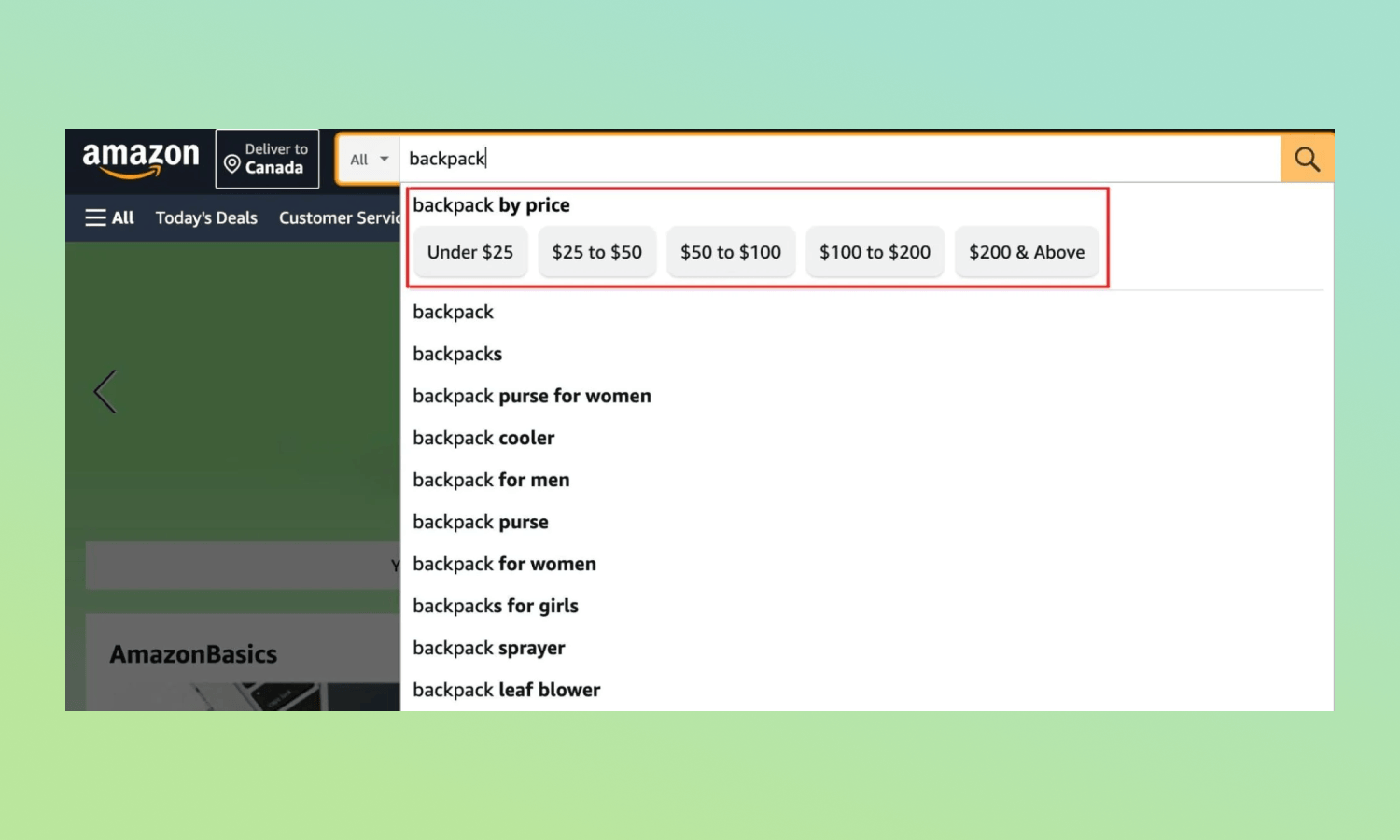
Be aware of long-tail keywords, which are longer and describe more specific items. The longer the keyword, the more specific it is. That means lower competition and, often, higher conversion rates.
You can also check how Amazon (and other major ecommerce sites) structure content for visibility in search. Take a look at relevant product menus for keyword category ideas.
Let’s say you sell women’s fashion items. Find that category on Amazon. Now, you can see all of the different ways Amazon sorts and organizes its products in that niche. Repeat this process for any other major competitors.

Keyword research tools
For more advanced keyword research, you’ll need a free SEO tool. The most popular is Ahrefs.
These tools provide the ability to research and analyze keywords en masse.
Let’s say you compete with BustedTees, a geeky t-shirt ecommerce store. Enter its domain into a keyword research tool like Ahrefs and click Organic keywords at the top. Scroll down to see all the keywords BustedTees currently ranks for. You’ll also find metrics like search volume and rank position. With an overview of you competitor’s SERP coverage, you made decide where to compete for keywords.
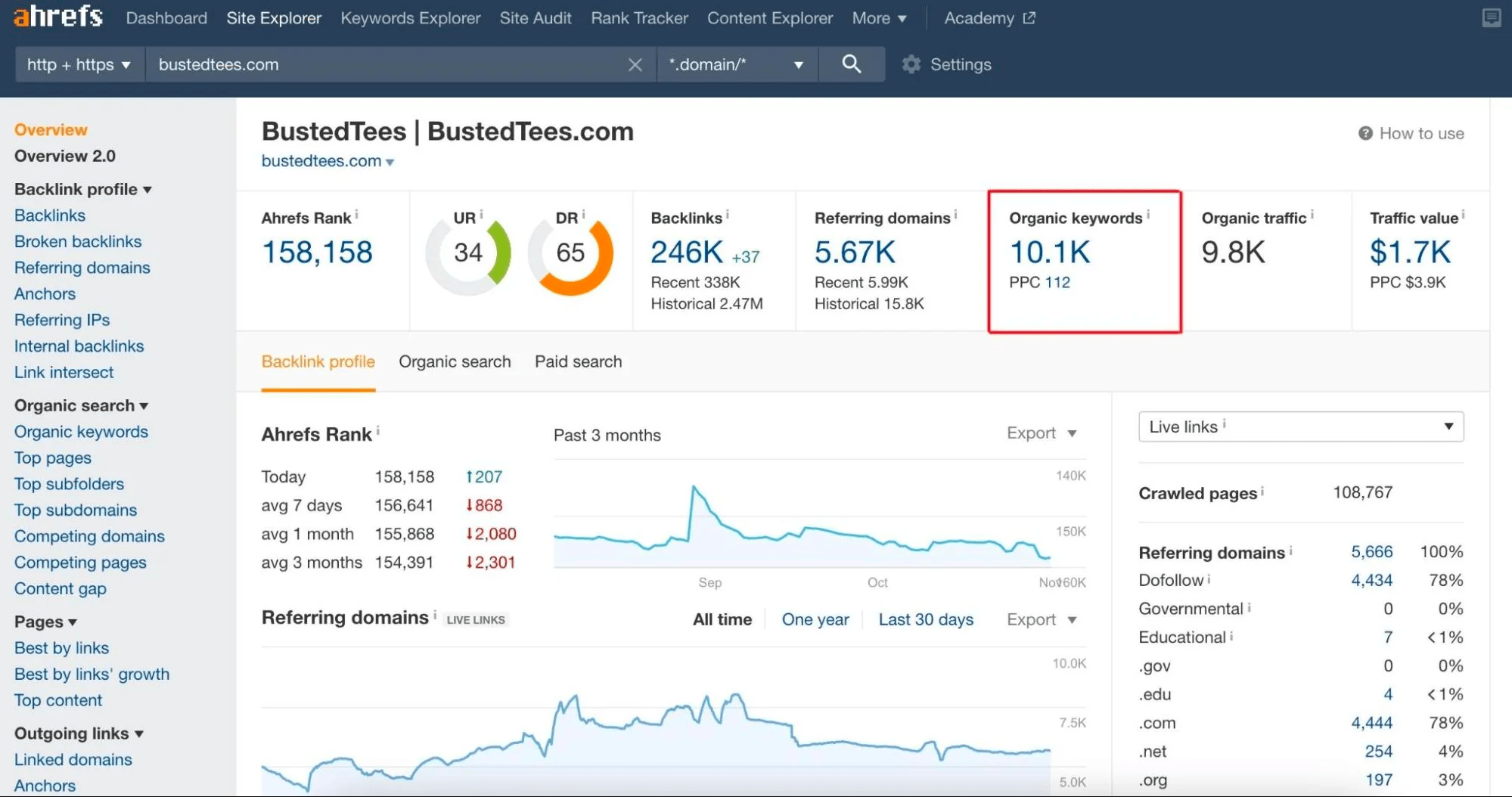
Choosing the right keywords for your store
No ecommerce website can target every keyword. Based on your customers and products, you’ll need to decide which keywords to try to rank for. Consider the following factors:
Volume
The higher a keyword’s search volume, the more potential traffic to your site. You can discover keyword search volume using Ahrefs or a free tool like Google Keyword Planner.
Competition
The lower the competition, the more likely you are to rank for a keyword. SEO tools will show you keyword difficulty/competition (KD).
Relevancy
How relevant is your product page or category page to the search term? This is a huge ranking factor that’s often neglected. Stick to keywords that your products would genuinely satisfy. You’re not foolin’ Google.
Intent
Target keywords that show an intent to buy or learn about a product. Usually, you can evaluate intent just by looking at a keyword. For example, if you own a bridal shop, which search has the more relevant intent: “ball gown wedding dresses” or “work dresses”? The ultimate keyword? A high volume, low competition term that aligns with the content on your website.
2. Site architecture for ecommerce
When it comes to SEO ecommerce, how the pages on your site are organized and structured affects your search engine rankings.
Site structure also impacts your user experience (UX). You need to make it easy for visitors and search engines bots to navigate content in your store.
As you add and remove products and categories, site structure can get complicated. Before you progress too far with developing your website, ensure:
- Your site structure is simple and easy to scale as your store grows
- Every page of your site is reachable within a few, intuitive clicks
Simplicity is underrated. You don’t want to have visitors relying on the back button to get around your site, running in circles trying to find what they’re looking for. You also don’t want to have to reorganize and rearrange your site structure every time you add a new product category.
Most of your SEO link authority is on your homepage, because that’s the most common page other businesses link to when referring to your website. So, the more clicks away from your homepage a product page is, the less authority it has.
Page indexing
As you implement SEO on your website, you’ll want to make strategic choices about which webpages you choose to index and rank.
Index is another name for the database used by a search engine. So to index a page is to have it added to that database. In other words, Google has discovered your page and added it to its search results:
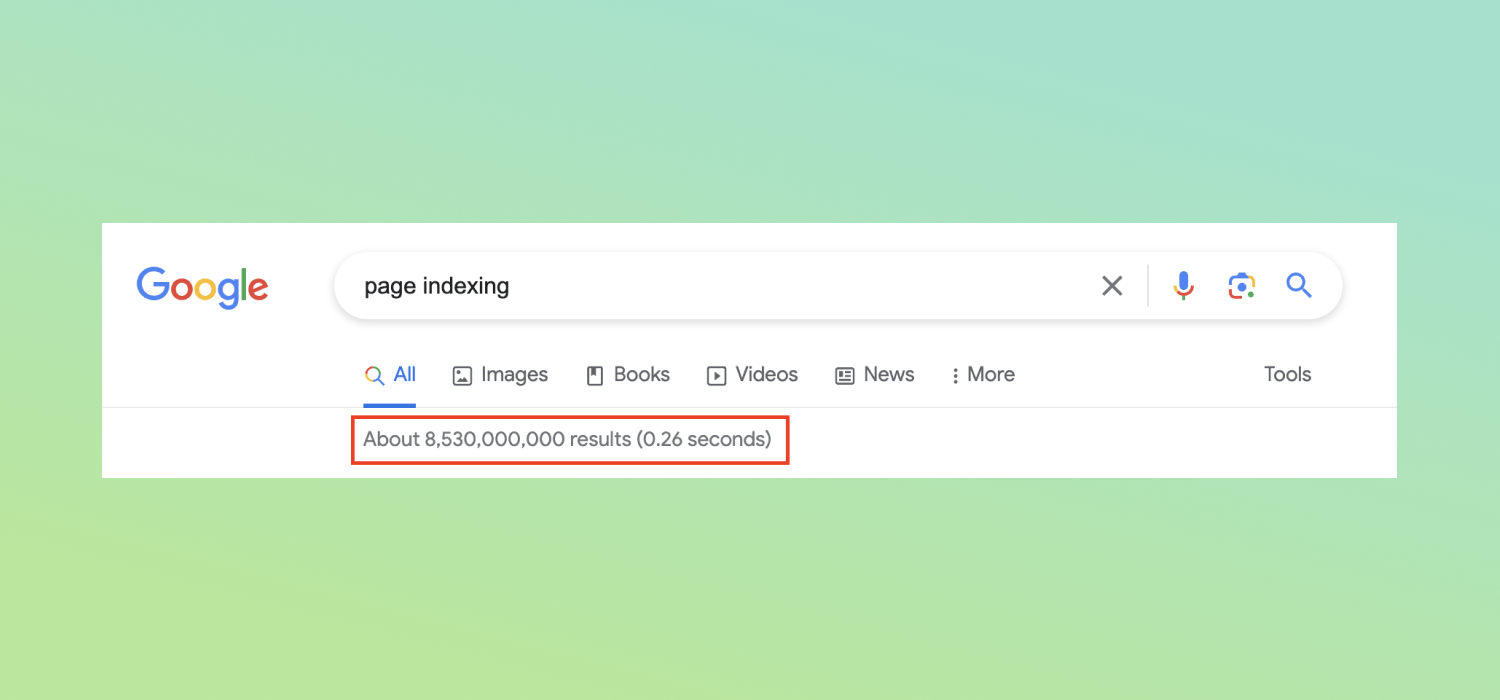
Don’t try to index and rank every page on your website. For advice on page indexing, take a look at these tips from Aleyda Solis, founder of SEO consultancy Orainti:
Aleyda recommends identifying which page types are worth indexing and optimizing for. Those pages should fulfill a real audience demand. “One of the most common issues for ecommerce sites is thin content, as well as content duplication,” Aleyda says.
“Thin content is the idea that there’s not much actual text on an ecommerce site compared to, say, a blog or software site. Content duplication occurs when the same content appears on multiple product and category pages.
“Adding blog content to your online store’s website is a good way to help counter thin content.”
The easiest way to handle content duplication is to hiding a page from search engines, known as noindex-ing. However, you can also create useful content for those pages to make them different, relevant, and competitive.
You can also canonicalize pages. Canonicalizing a page is a way of telling Google that a URL is the “master version” you’d like to display in search results. This is helpful in duplicate content situations, because without canonical tags, Google might:
- Miss unique content while wading through duplicate content
- Dilute your ranking ability
- Choose the wrong master version for you
💡 Good to know: If you’re using Shopify, auto-generated canonical tags are added to pages to prevent duplicate content from appearing in search results.
Aleyda suggests going beyond noindex or canonicalization when you’re ready.
“Assess if there are enough search queries around a product’s characteristics to identify whether to index its page,” she says.
“If you do index a page, ask yourself if there’s enough content on the page and if it’s aligned with the way the users are searching. You may need to expand and optimize the page to keep it relevant and competitive.”
Aleyda shared this handy chart to help visualize the indexing decision process:
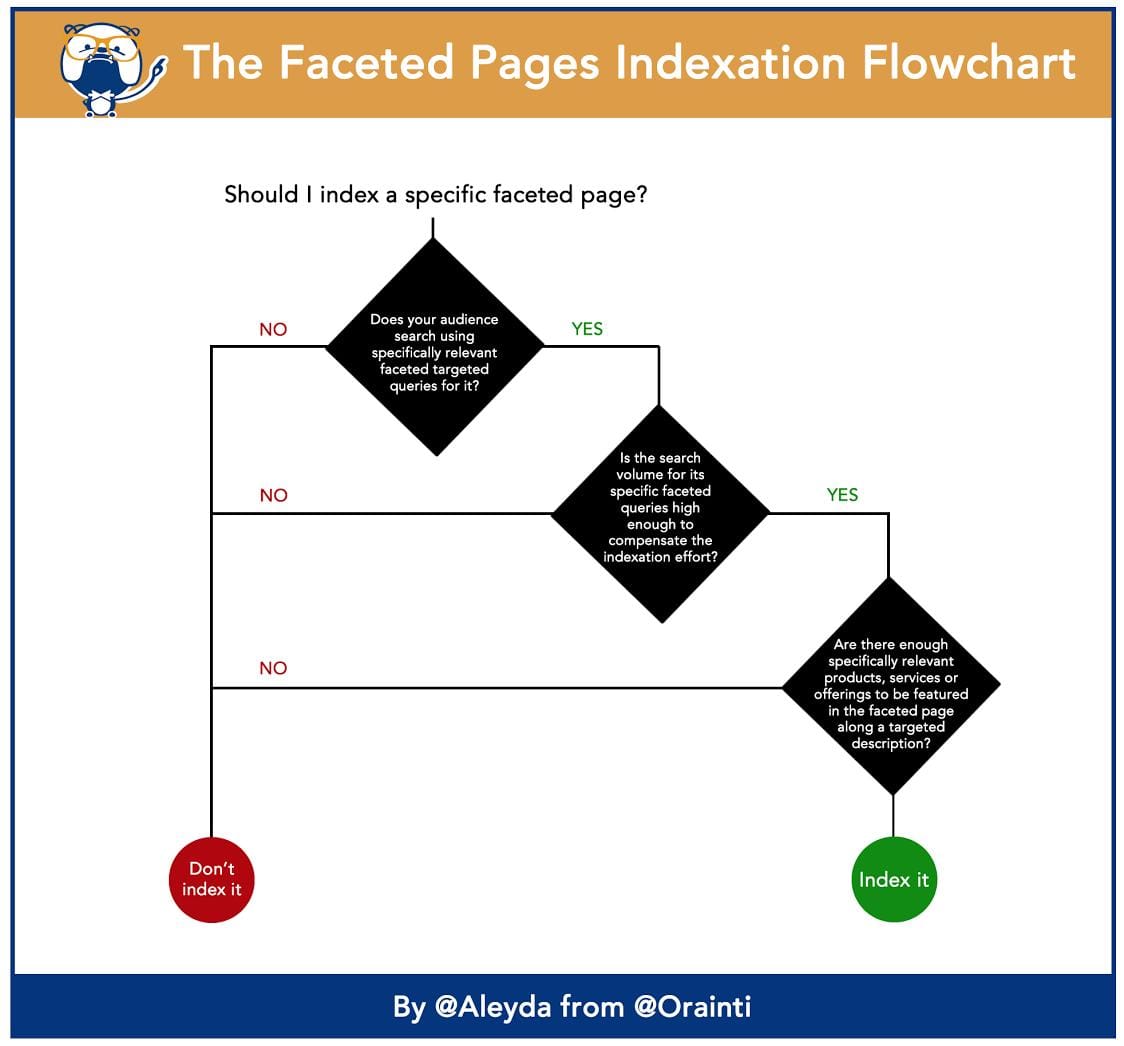
Page indexing flowchart by @Aleyda.
The big takeaway? Not every level of your site structure is worth indexing and optimizing, so be strategic and refer to the chart above.
💡 Pro tip: Add breadcrumbs to your product pages to improve website navigation for customers and Google. Breadcrumbs tell Google how your site is structured and let people know where they are within your store.
Notice how Allbirds uses breadcrumbs on its product pages to orient users. If someone decides they don’t want to purchase the Everyday sneakers, they can easily click back to Men’s Shoes or the homepage and look for a different product.
Use a third-party app like Category Breadcrumbs to show your customers the path they’ve navigated down through your category tree.
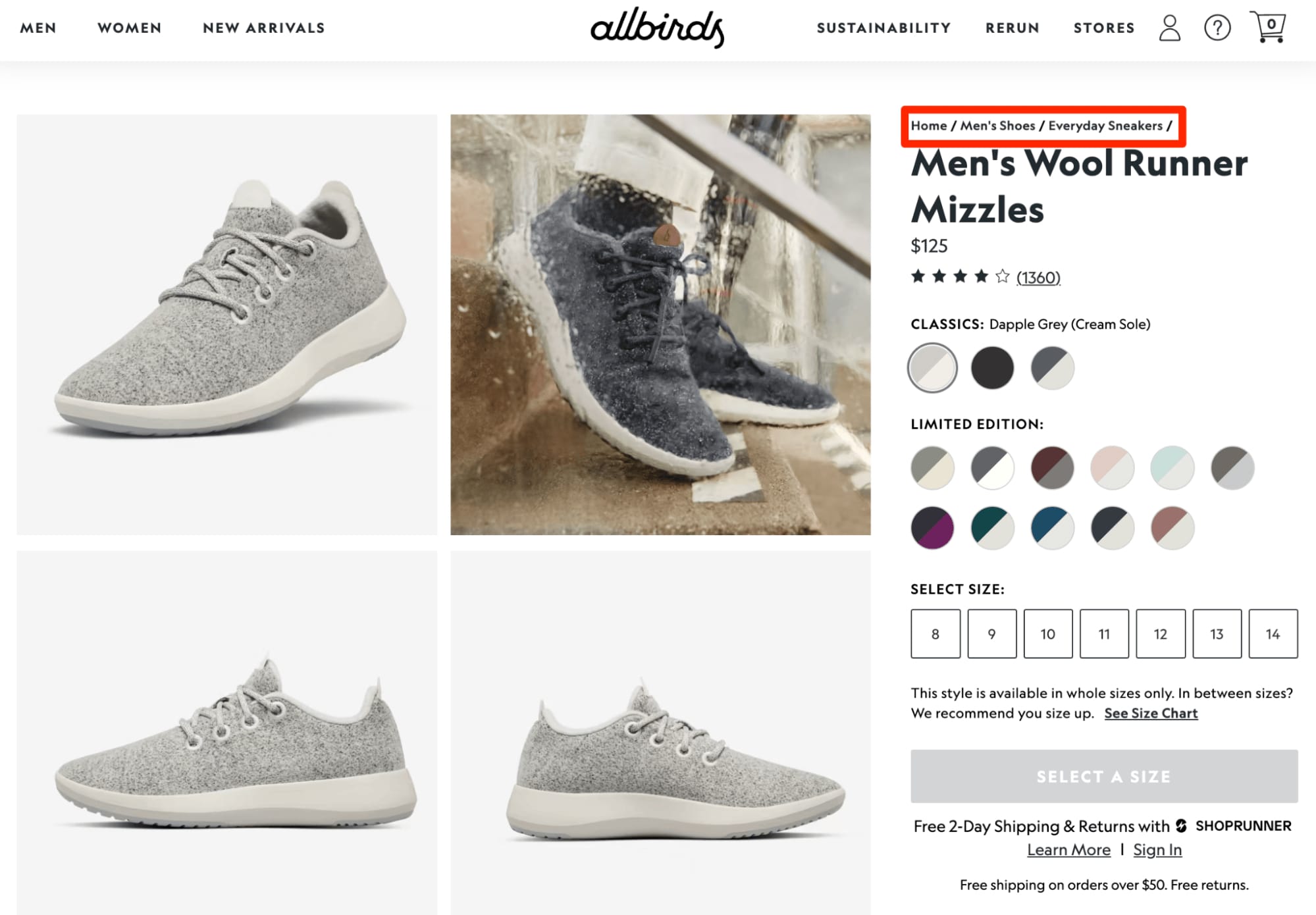
3. Technical SEO
Technical SEO is an under-the-hood type of search engine optimization. It’s unseen by shoppers, but ensures your website is optimized for crawlers, has ideal site speed, and works on mobile. Technical SEO leads to:
- Better website engagement, because your site is fast and easy to access
- More organic traffic because your site is easier to crawl
Some ways to improve your technical SEO for ecommerce include the following:
- Create logical internal linking with your menus.
- Submit your sitemap to Google Search Console.
- Optimize images to load quickly.
💡 Hire a technical SEO expert to run a site audit and optimize your store from the Shopify Experts marketplace.
4. On-page SEO for ecommerce
When you’ve done your keyword research and your site structure is ready to rock, it’s time to optimize the content on your two highest-value page types:
- Product category pages
- Product pages
Ecommerce content basics
If you’re using Shopify, you likely know that Shopify stores include several SEO features. Some are automatic:
- Canonical tags are included.
- Your website’s sitemap.xml and robots.txt files are generated.
- Themes generate title tags that include your store name.
- Themes have social media linking and sharing options.
But other features require you to manually optimize your site:
- Edit the title tags, meta tags, and meta descriptions to include your keywords.
- Edit the alt text of product images to ensure it accurately describes visuals.
- Make sure your file names include keywords.
- Think carefully about the URLs for blog posts, webpages, products, and collections.
When optimizing your title tags and descriptions, note that these are Google-facing. The primary goal is ranking on the first page. The secondary goal is convincing searchers to click through to your site.
Modifiers like Deals, 20% Off, Free Shipping, Wide Selection, etc., can give you a boost when placed in the meta description and help you attack long-tail keywords.
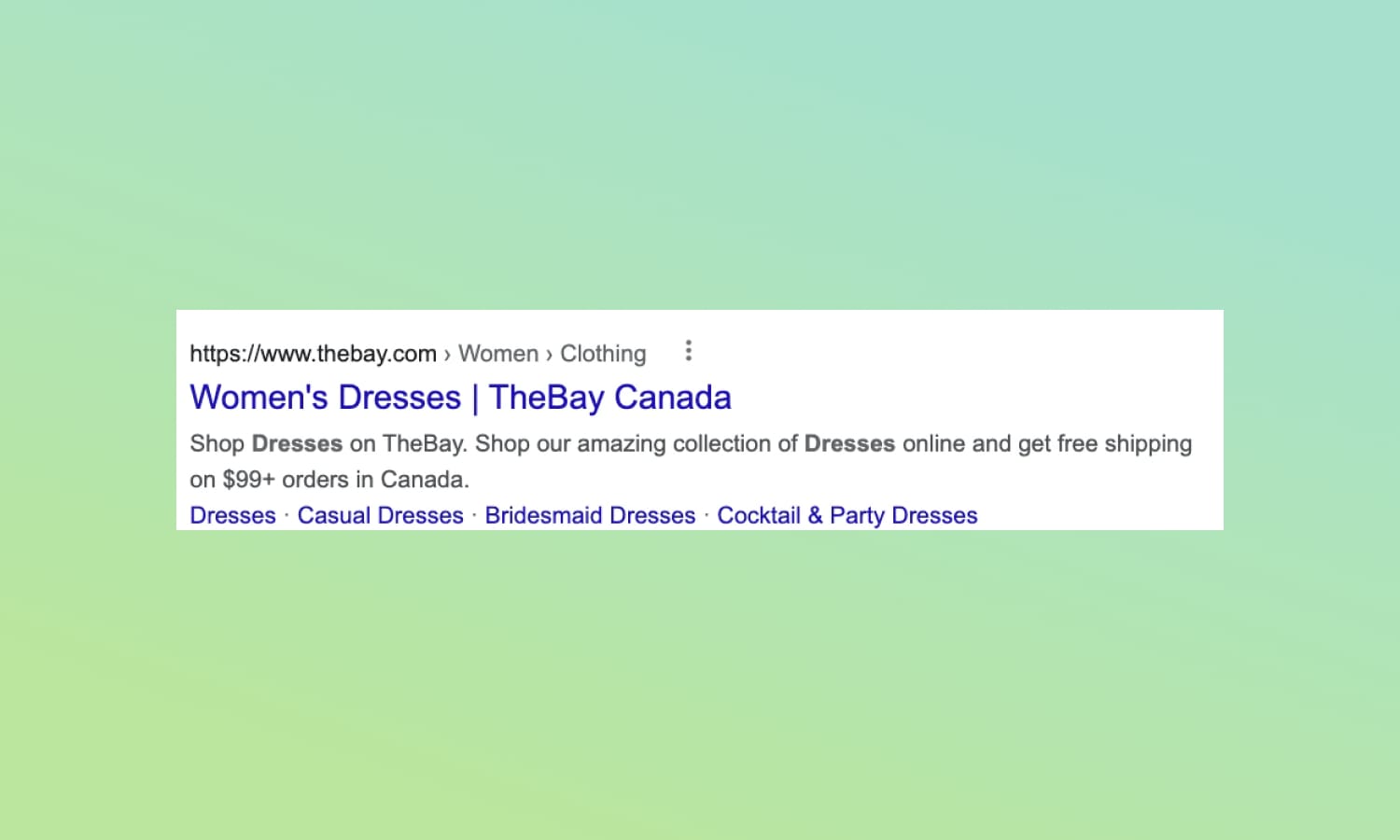
Ecommerce product descriptions
In ecommerce SEO, Google and other search engines use the content on your page to decide which keywords to rank your page for and how high your page should rank for each keyword.
If a product page has a short description and not much else, Google doesn’t have much to go on. Copying and pasting a description from a manufacturer or supplier is called duplicate content and is also advised against.
Instead, write unique, comprehensive descriptions that capture readers’ interest and contain lots of details about your items. Quality on-page content can help improve the ranking of your product pages and reduce overall thin content on your store.
That’s why you’ll often see product pages with longer descriptions, reviews, etc. amongst higher-ranking search results.
Try to include relevant keywords and subheadings in every section of your page to help Google understand what your content refers to.
If you can’t create content for every product, focus on those currently ranking on the bottom of the first page. Boosting these results can have the biggest impact on conversions, as they don’t have as far to climb up in rankings.
The more you write, the more accurate Google can be in ranking your page. Your customers won’t hate the extra product info either. It might even help persuade them to buy.
Take advantage of latent semantic indexing (LSI) keywords
LSI keywords are closely related to your main keyword. Enter your keyword into Google Keyword Planner to find related terms and phrases that you can pursue with your content.
You can also find LSI keywords through an Amazon search. Look up your main keyword and check for secondary keywords that repeatedly appear.
For example, let’s say you’re trying to sell a blender. The terms “14 Speed,” “450W,” and “48oz Glass Jar” all appear multiple times, indicating they’re strong selling factors and likely common elements of search terms.
If you’re getting traffic from a main keyword, try to slide onto the first page for related secondary keywords as well. Use LSI keywords in your content whenever they make sense.
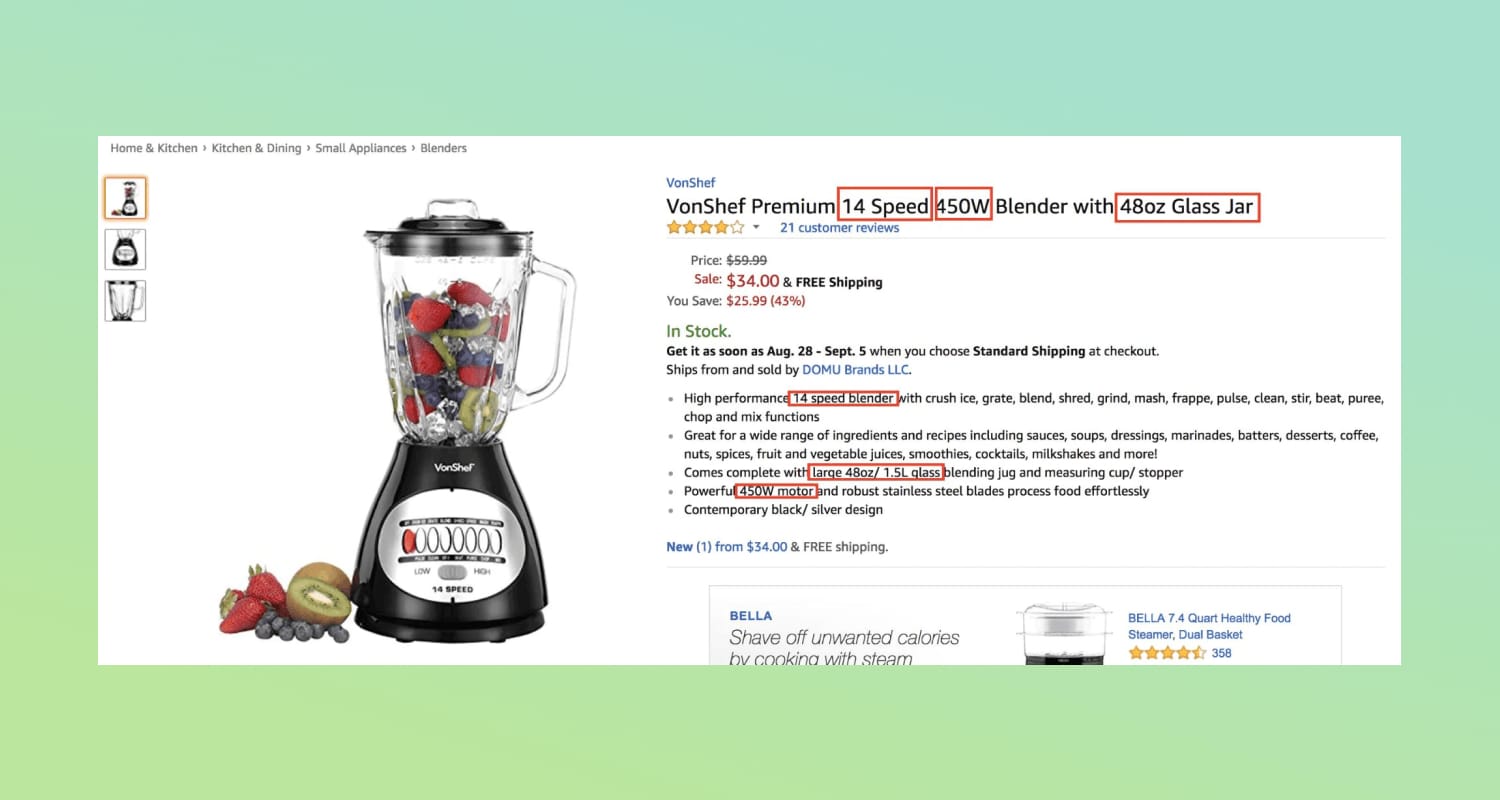
Create internal links
The longer you can keep your visitors browsing your content, the more chance you have of making a sale. Relevant internal links to other pages on your site help potential customers browse and discover information or products.
In your anchor text (the words that you place the internal link in), make sure you include the target keyword verbatim. Internal linking can be used to drive customers to relevant product pages, category pages, and educational content.
Don’t go too crazy with internal linking. One or two links every few hundred words is enough. Pro tip: If you understand your audience’s decision-making process, you can develop content that helps them through the various stages in their buying journey.
5. Blogging
Blogging is a form of content marketing where you use on-page and technical SEO strategies to increase your website’s search visibility. It ensures search engines find your website credible to rank for specific keywords that align with your audience’s interests and needs. When blogging, you’re using SEO to power an ongoing long-form content strategy.
Every blog post published has the potential to:
- Build your reputation as a credible source
- Improve your site’s authority
- Increase visibility in organic search
Imagine you were starting a company that sells running gear. You want to help potential customers understand your products, use them more effectively, and solve their running and fitness problems. If you want to get found in search engines like Google, blogging can help you get there.
A well-written blog gives your store a steady stream of original content. The more people who discover your content, the more reliable you’ll become as a source of information. This, in turn, helps you rank higher. Ecommerce businesses often struggle with blogging because it takes time, effort, and resources to get it right. Randomly publishing blog posts each month won’t bring traffic to your website.
However, there are many ecommerce businesses that do blogging well. For example, retailer Au Lit Fine Linens sells everything to help you get a good night’s sleep, including luxury sheets, pillows, bath linens, and more. The brand also has a blog, Between the Sheets that provides helpful articles about how readers can improve sleep quality.

The blog is SEO driven, meaning that its purpose is to rank in search engines. Posts often highlight a problem the reader is having, and offer Au Lit Fine Linens products as the solution—a fine balance between promotional and informational.
When starting a blog for ecommerce SEO, focus on the following three elements:
- Research what keywords to rank for. Publish content that targets keywords people are likely to search for when solving problems or making a buying decision.
- Optimize blog posts for SEO. Make sure each blog targets a specific keyword for SEO.
- Present your products as a solution to the problem. Every post doesn’t have to be about your products. But don’t be afraid to link out to a product page or two when appropriate.
6. Link building
One of the oldest components of the Google algorithm is PageRank. It’s a system that seeks to understand webpage quality by looking at how many links it receives from other websites.
Google uses the number, quality, and relevancy of a page’s links to judge its trustworthiness. As a result, new websites with few links have less authority in the eyes of search engines. While time can fix this, building quality backlinks can help Google recognize your authority faster.
Respected .com, .gov, and .edu sites tend to provide the most authority when they give you a backlink. Links from large, well-ranking websites operating within your niche are particularly lucrative.
One of the best ways to approach building links is to focus on partnerships. Determine what content you can create that will provide value to other websites. If you can make something that others want to use, they’ll usually cite your content with a link.
Guest posts
Guest posting can be a functional way to build backlinks, provided the content you create for other websites is relevant to their users. Run some ecommerce keyword research and analyze backlinks with Ahrefs to find sites in your niche that are receptive to guest posts.
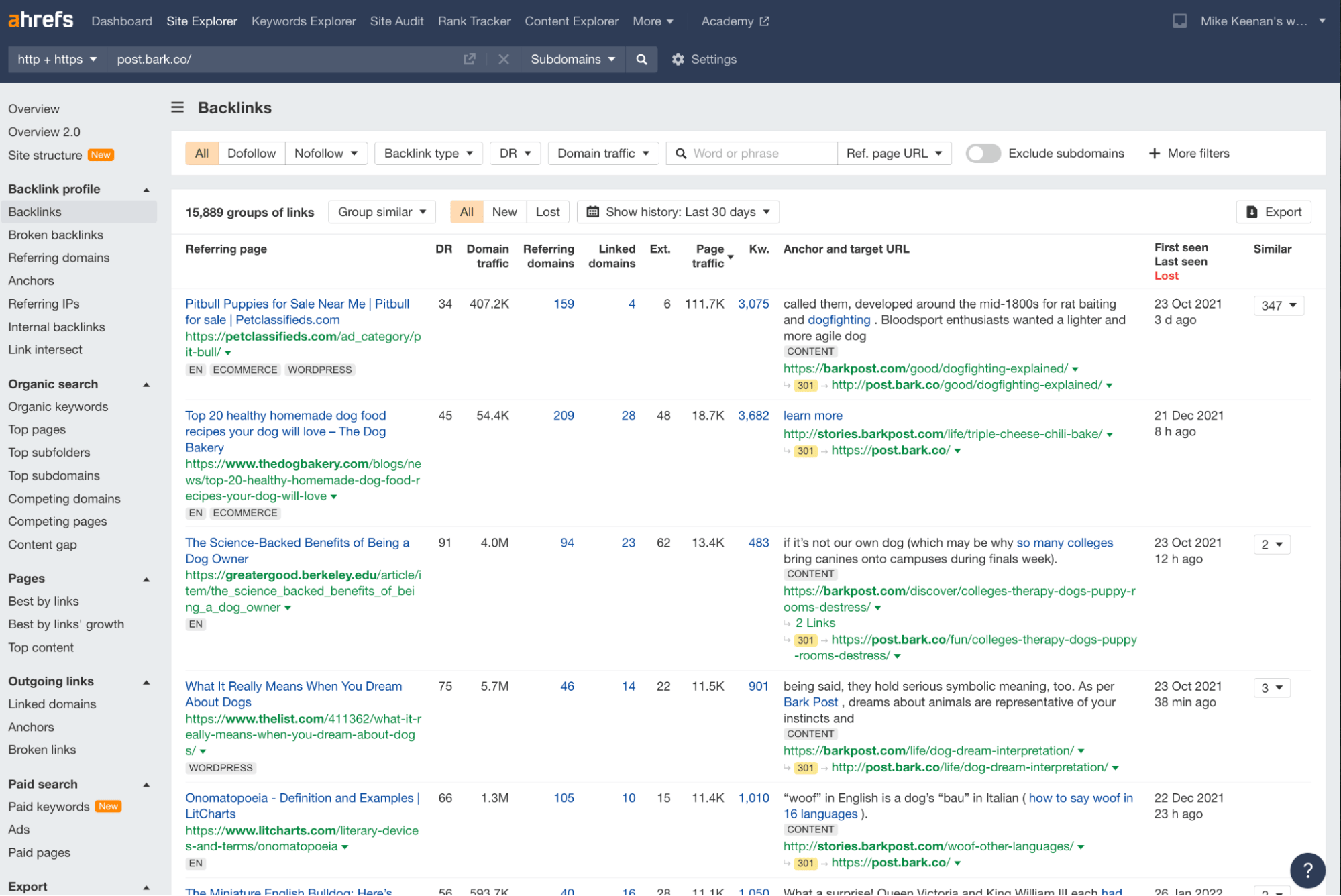
Press mentions
Another way to build backlinks to your ecommerce store is through press mentions. Building a press list or hiring a PR firm can be expensive, so here is a simple growth hack anyone can do.
Sign up for Help A Reporter Out or Help a B2B Writer and you will get a daily digest of reporter requests right to your email. When a lead matches your brand, reach out to the email address provided and pitch a story. If you get an interview, make sure to ask for a backlink to your website.
Best ecommerce SEO tools
- Avada SEO & Image Optimizer
- SEOAnt
- Google Analytics
- Ahrefs
Avada SEO & Image Optimizer
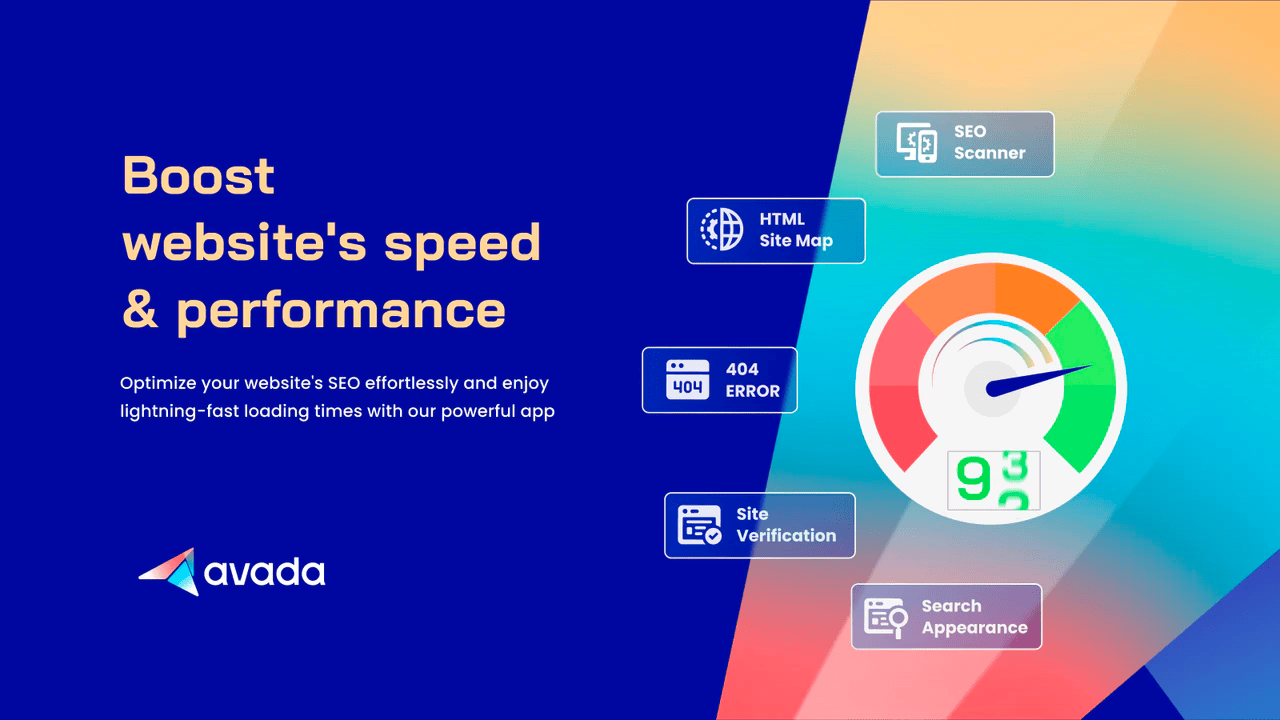
Avada SEO is a plug-in to help ecommerce stores outrank competitors. It offers image compression, site speed optimization, schema markup, and other technical features that keep your website optimized for search. It also has 24/7 customer support.
SEOAnt
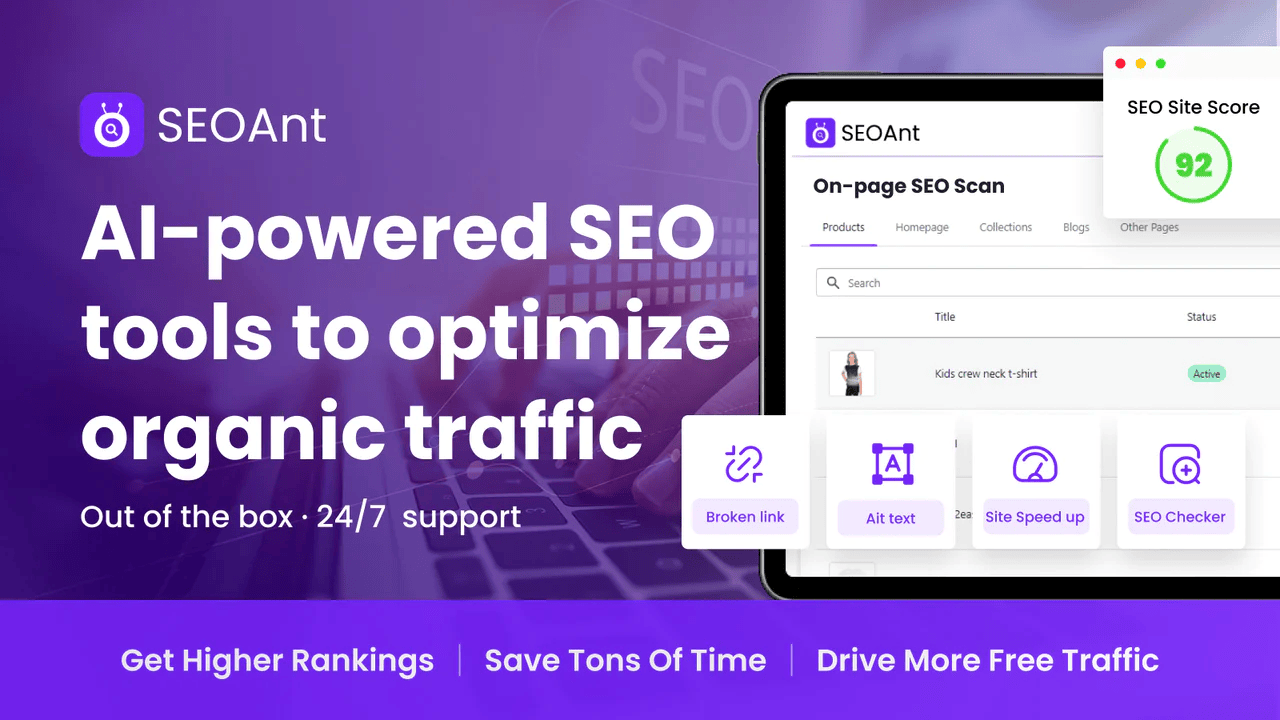
SEOAnt is a free tool you can use to run SEO checkup reports, fix broken links, and optimize image sizes. It also has AI features for writing meta and alt text.
Google Analytics
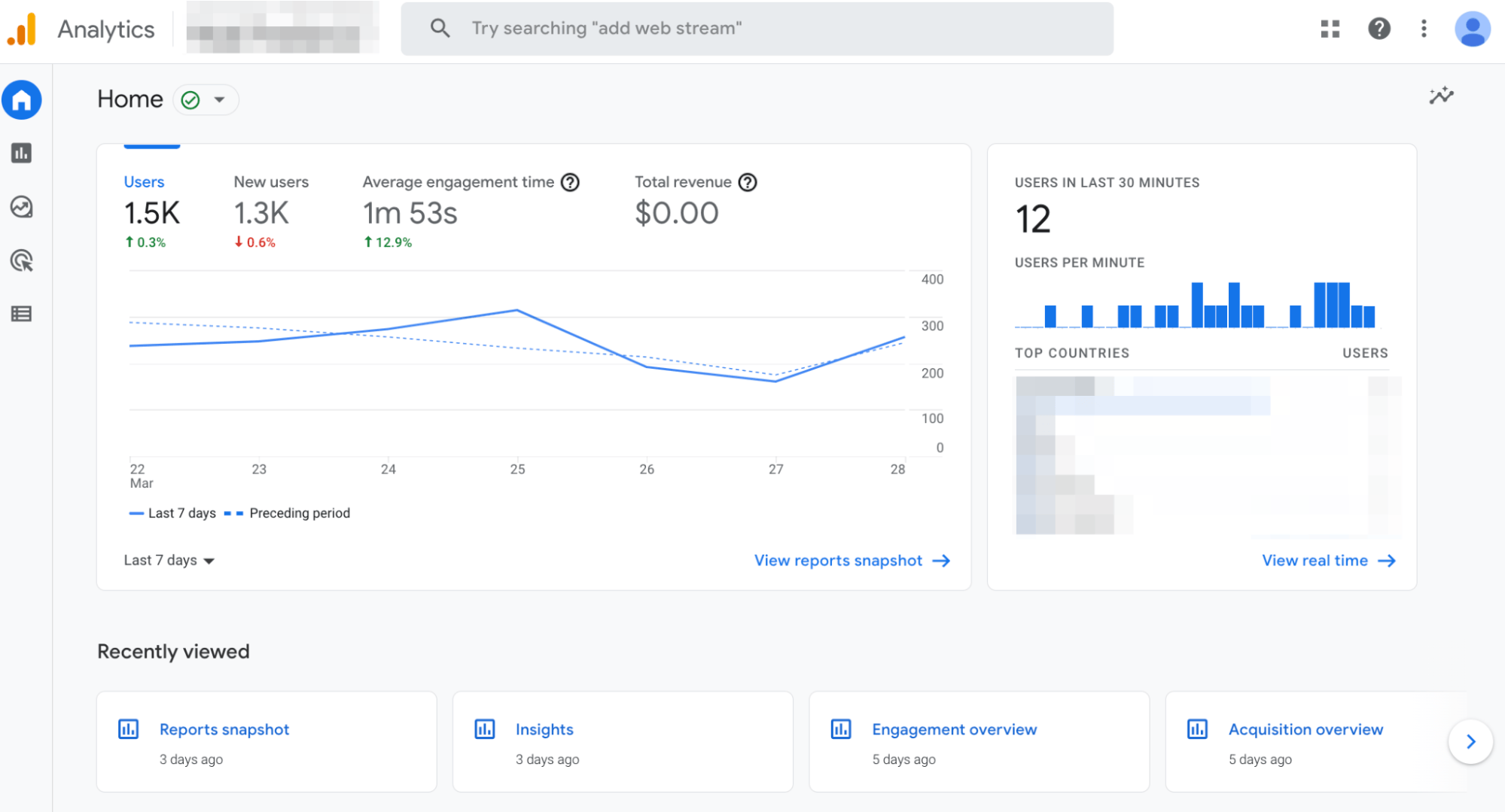
If you own a website, you’re going to use Google Analytics. This free SEO tool tracks and reports website traffic, giving you the insight to better understand customers, optimize your store for SEO, and improve marketing ROI. As a Shopify store owner, you can connect Google Analytics to Shopify Analytics and choose specific ecommerce data to track.
Ahrefs
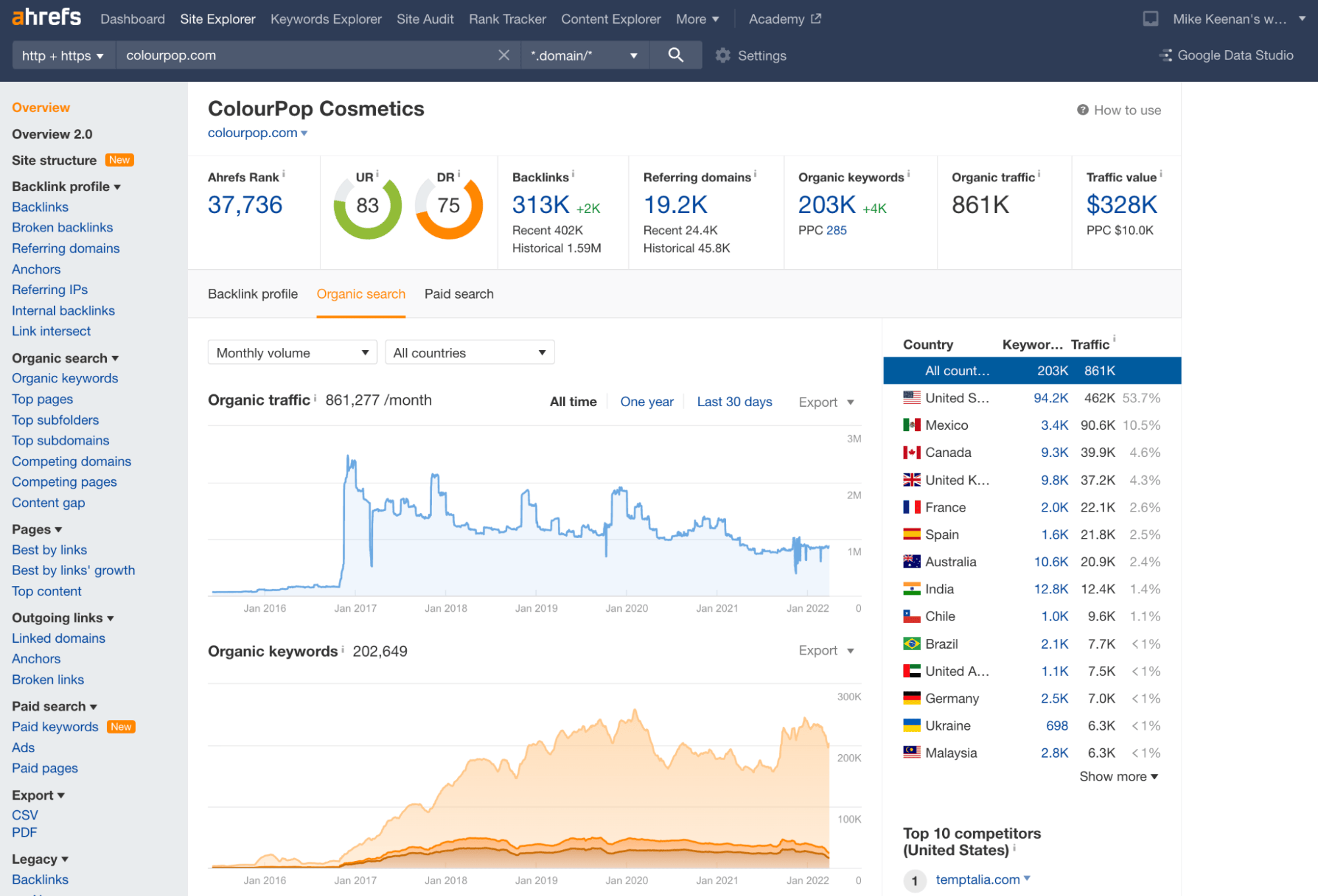
You’ve seen Ahrefs at work in this post, but it’s worth looking deeper at some of its key features. Ecommerce marketing professionals use Ahrefs to create SEO campaigns and rank higher in Google.
Ahrefs is a competitor of Moz and Semrush, two other SEO software companies you’ll find when researching SEO tools.
Use Ahrefs to analyze a website’s link profile, keyword rank, and overall SEO performance. You can also use it to conduct keyword research for Google, Amazon, and YouTube.
Getting started with ecommerce SEO
Rankings are never static, so ecommerce SEO never stops. But the six steps in this article should help you build a solid SEO foundation for your online store.
Remember to keep your content original and in-depth, regularly audit your site for technical issues, explore backlinking opportunities, and always look out for new keywords that match your brand and products.
Source: Shopify